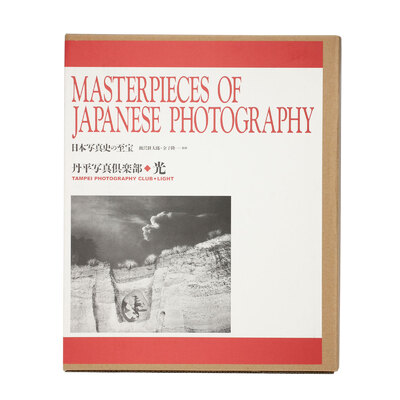Tampei Photography Club
丹平写真倶楽部
The Tampei Photography Club was founded in 1930 under the influence of a few of the photographers in the Naniwa Photography Club but it was in 1924 the Tampei Pharmaceutical company built the Tampei House, establishing their executive office in the Shinsaibashi area, Osaka. The Tampei House was a concrete building with reinforced steel, three floors above around and one basement floor. The Tampei House was a cultural hub; other than the pharmacy there was a café, photography material department, photography studio, dark room, exhibition space and a Western Art research center directed by Rinsaku Akamatsu.
The central members of the Tampei Photography club were Bizan Ueda and Nakaji Yasui; both were members of the Naniwa Photography Club. Terushichi Hirai and Koro Honjo were also members of both clubs. The two clubs were considered to be sibling groups. At regular monthly meetings members would critique each other’s works, hansetsu size (356×432mm) to Ooyotsu giri size (279×355mm) prints, with their names covered.
Later in 1934, Sutezo Otono, and the next year, Osamu Shiihara and Toru Kono, became members. Hirai and Honjo, whose works tended towards the avant-garde, were also members of the Avant-Garde Image Group that was established in 1937. From the beginning, The Tampei Photography Club centered around experimental expression using techniques like photogram and photomontage. Surrealist expression can also be seen in many of the works. In addition to regular exhibitions in their local Osaka, they also held travelling exhibitions in Tokyo. The club’s avant-garde ethos made strong impressions.
At the time, the New Photography Movement’s moment had passed and the Avant-Garde Photography Movement was trying gain recognition. In 1931, the German International Traveling Photography Exhibition, a collection of moving images and photographic works using experimental techniques organized by Moholy-Nagy in Germany, formerly named Film und Foto, toured around Japan also stopping in Osaka. The exhibition featured many works by Bauhaus artists, Russian Constructivists, Dadaists and Surrealists. In 1937, Shuzo Takiguchi organized the Overseas Surrealist Works Exhibition which also made it’s rounds to Osaka. Works by established Surrealist artists like Max Ernst, Salvador Dali, Hans Bellmer and Man Ray were exhibited, although some were reproductions. It is said that such European exhibitions were one of the factors that influenced the rise of the New Photography Movement and the Avant-garde Photography Movement.
In 1930, the same year that the Tampei Photography Club was founded, The Ashiya Camera Club, centered around Iwata Nakayama, was established in Hyogo Prefecture and in Tokyo the New Photography Workshop, centered around Senichi Kimura, was also established. In 1938, the Avant-garde Photography Association was established in Tokyo. The next year Société Irf was established in Fukuoka and Nagoya Photo Avant-Garde in Nagoya. During the 1930’s, there were groups all over Japan that championed the New Photography Movement and the Avant-garde Photography Moment.
In 1940, the photography book Hikari (Light) was published to commemorate the Tampei Photography Club’s 10th anniversary. The 111 works by 58 different artists of this photography book were chosen from the club’s regular Tampei Exhibitions held from 1935 to 1939.
In 1942, Nakaji Yasui passed away and during the Pacific War the club ceased all activities.
